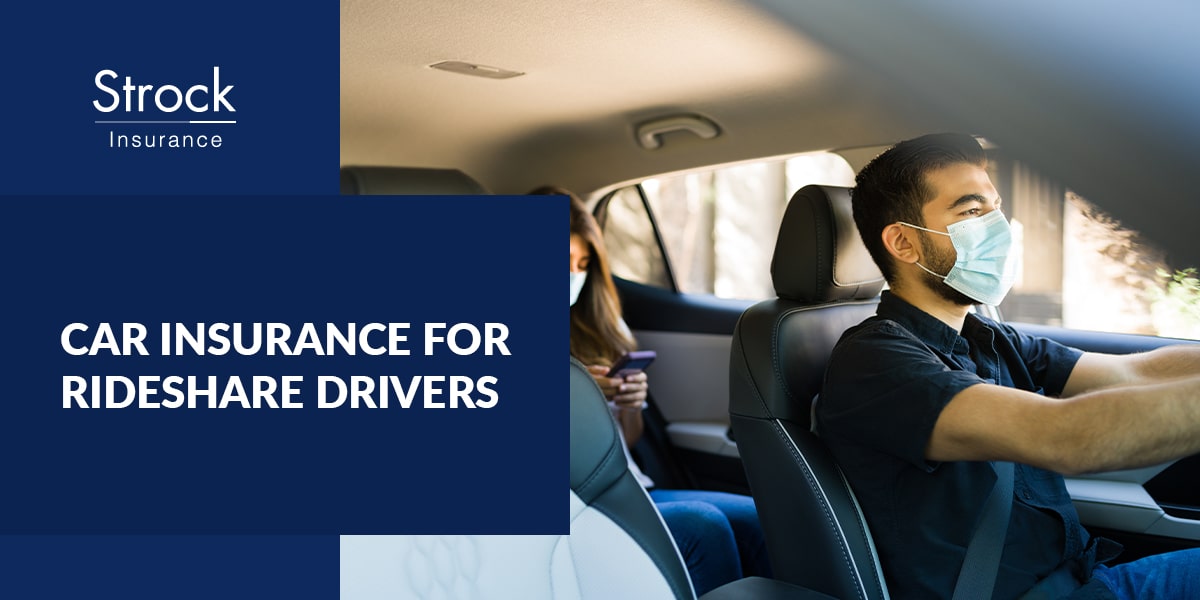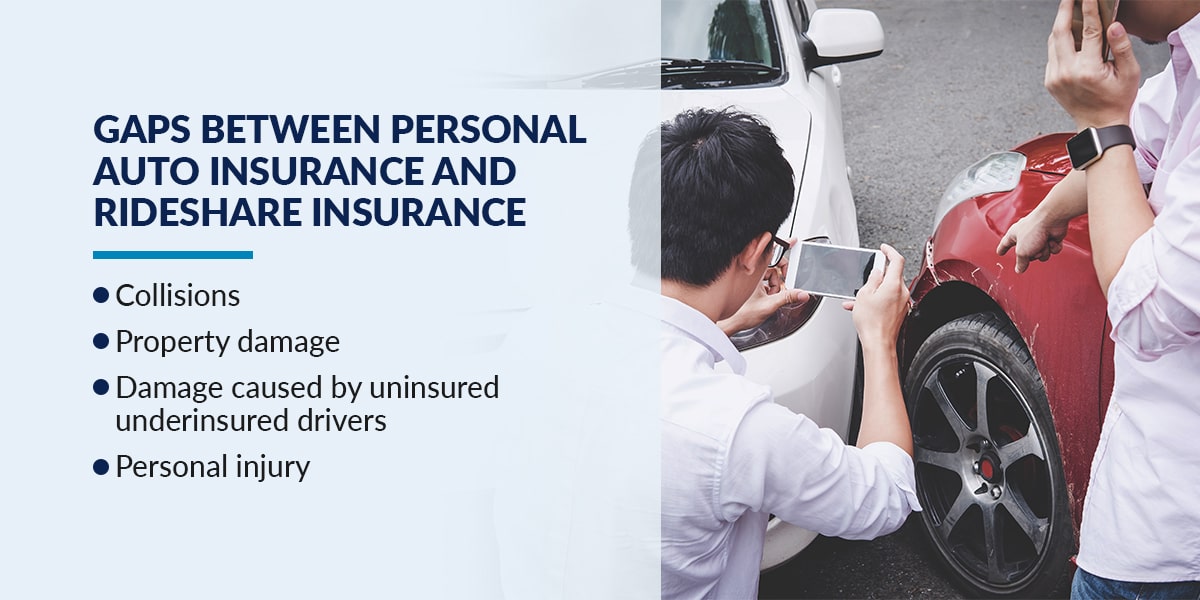
Ridesharing services such as Uber and Lyft are becoming increasingly popular, especially in large cities. People can use rideshare services to go to work, attend parties, go shopping and much more. With the increased use of these services, more people might explore the benefits of becoming rideshare drivers as their primary or side job.
If you’re considering driving for Uber or Lyft or even looking to use these services as a passenger, you’ll want to learn more about the car insurance policies drivers carry. This rideshare insurance guide will provide all the information you need to know.
What Are Rideshare Drivers?
Rideshare drivers are drivers employed by companies that match passengers with vehicles for hire, comparable to a taxi or other ride service where people can ride together. Technically, Uber and Lyft drivers are contract employees. Uber employs more drivers than Lyft, though rideshare drivers may elect to work for both companies.
Rideshare drivers work flexible hours and have complete control over their workday. People who use these services must use the rideshare company’s mobile app or website to view and select available drivers to pick them up. The driver receives alerts about new ride requests through their smartphone, which they have the freedom to accept or deny. Passengers link their credit cards to the app, which charges them automatically after a ride.
Accepting fewer rides will affect a driver’s pay, but they can choose how much work to take on. Uber and Lyft also offer different services ranging in price. For example, Uber Premium drivers pick passengers up in higher-end vehicles such as a Mercedes, making the experience more luxurious.
The requirements are modest enough that many people can perform the job’s duties. Rideshare companies require their drivers to have a valid driver’s license, a car and car insurance that meets or exceeds state minimums. They also have to be an appropriate age and be healthy. Other regulations could include:
- Passing a background check
- Completing a driving test
- Having a clean driving record
- Maximum limits on the number of drivers based in a geographic area

Gaps Between Personal Auto Insurance and Rideshare Insurance
Car insurance is an essential requirement for rideshare drivers, just as it is for regular drivers. However, standard car insurance leaves some coverage gaps that rideshare drivers may be interested in having. For example, regular auto insurance includes options to help cover the following costs.
- Collisions: When an insured driver gets in an accident, collision coverage helps repair or replace the car.
- Property damage: Cars may also cause damage to property like buildings, mailboxes and sheds. If a driver damages someone else’s property, property damage coverage keeps them from having to pay a large amount.
- Damage caused by uninsured/underinsured drivers: With uninsured and underinsured driver coverage, drivers get help covering the damage for both vehicles if one driver doesn’t have the state’s minimum auto insurance requirement.
- Personal injury: People may be injured in a car accident, possibly leading to hospital bills. With personal injury car insurance, the driver won’t be responsible for paying a considerable amount if the people involved in the accident receive bodily harm.
While rideshare drivers must have at least their state’s minimum auto insurance requirement, the coverages listed above may not cover specific situations a driver could face. The rideshare company’s insurance policy will help cover the expenses in some instances. However, a gap exists between the driver’s insurance and the rideshare company’s. The amount of coverage a rideshare driver receives depends on which stage of the ride they were in during the accident.
The Three Stages
Uber and Lyft divide a ride into three different stages, and insurance protection differs in each.
- Driver is in the vehicle but not logged into the app: Here, a driver is not in “driver mode,” according to the rideshare app. If an accident occurs, it’s up to the driver’s car insurance to cover the damage. Neither Lyft’s nor Uber’s insurance coverage applies to this situation.
- Driver is logged into the app and waiting for a ride request: In this case, the driver is technically working, and Lyft and Uber provide liability coverage for any accidents that are the driver’s fault. This car insurance for rideshare drivers covers any losses sustained by others who were injured or had property damaged, up to certain limits per person or per accident. It doesn’t cover the driver’s injuries or damages.
- Driver accepted a ride: Now, the driver has agreed to a ride, and there are passengers in the car. Uber’s and Lyft’s insurance each cover $1 million, and it applies to injuries sustained by the passengers or anyone who gets hit if the driver causes an accident. This insurance also covers uninsured/underinsured drivers, plus contingent comprehensive and collision coverage up to the car’s actual cash value, with a fairly high deductible.
More About Liability Coverage
Uber’s and Lyft’s liability coverage extends to passengers and others who are injured or sustain damages when the rideshare driver is at fault. When the driver is logged into the app but isn’t driving anyone, the liability coverage from Uber and Lyft is $50,000 for each person injured in an accident the driver caused.
There’s also a per-accident limit of $100,000 for injuries, which is the most that Uber and Lyft will pay for injuries no matter how many people were in the car. As far as property damage, these rideshare companies’ car insurance covers $25,000 liability for any vehicle or property damage from an accident that’s the driver’s fault.
Despite the coverage a rideshare company provides its drivers, there is a significant gap between the driver’s insurance and the coverage provided by the rideshare company. For example, when a rideshare driver is logged into the app and waiting for a ride request, their personal insurance may not cover any accidents. Uber’s and Lyft’s insurance policies cover a significant portion of the expenses if an accident occurs at this stage, but there are limitations.
Because of this coverage gap, many drivers still find it beneficial to purchase rideshare insurance. Rideshare coverage is an add-on that covers gaps in the coverage provided by rideshare companies. A rideshare insurance policy can help reduce drivers’ out-of-pocket expenses for personal injuries or property damage they cause in an accident. Rideshare insurance coverage also helps with the cost of damage to the driver’s car.
Finding the Right Insurance
Insurance from ridesharing companies generally doesn’t cover the driver. An Uber or Lyft driver needs to ensure their personal car insurance covers ridesharing services, or they should look into getting a commercial liability insurance plan. Rideshare insurance coverage is a form of commercial vehicle insurance, which can be helpful when a rideshare driver needs higher insurance limits.
Working with an insurance provider who understands your exact needs is the best way to ensure you have complete coverage as a rideshare driver. At Strock Insurance, we are the best local, Erie or Progressive insurance provider in Harrisburg and Central PA. Contact Strock Insurance today to learn more about insurance options for rideshare drivers and ensure you have the plan you need.

